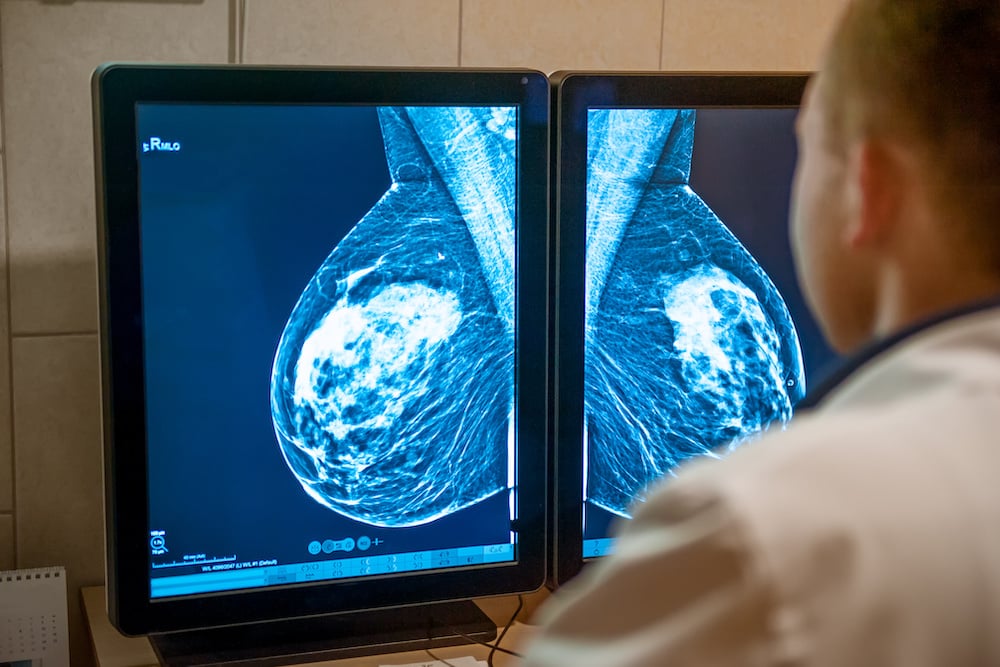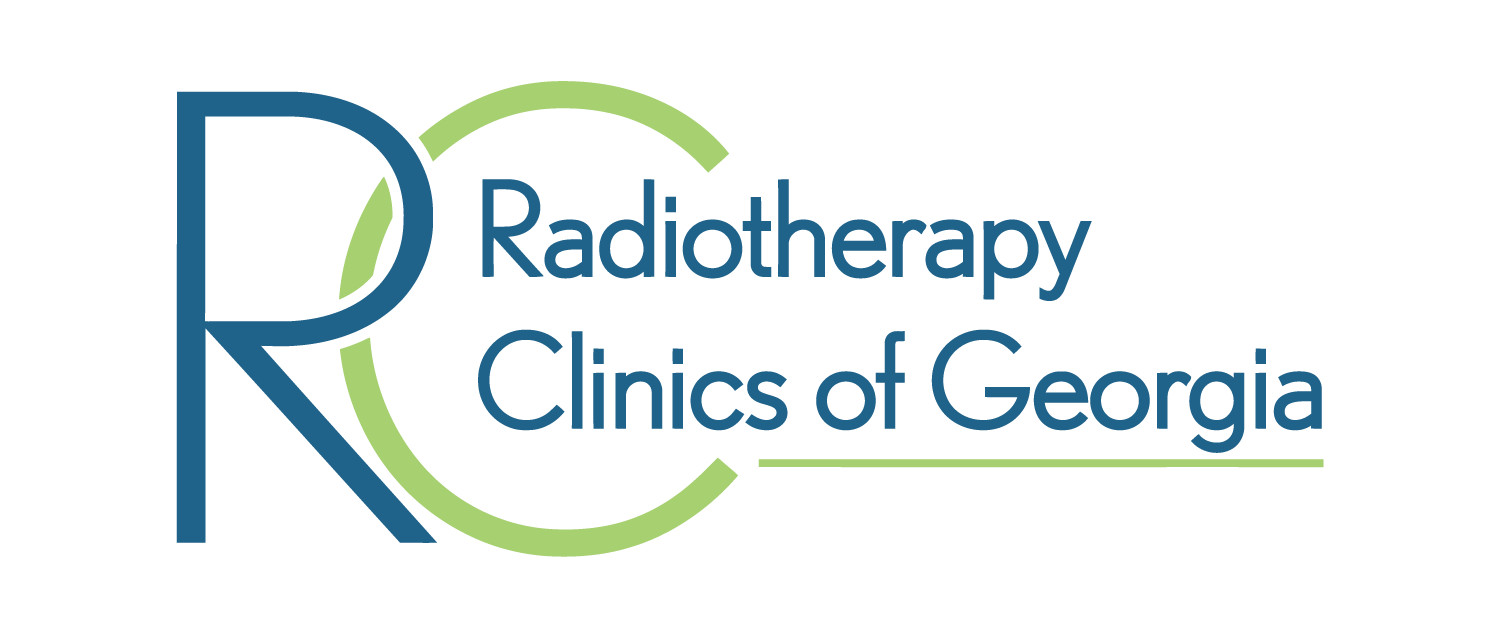
Breast imaging tests, such as mammograms, magnetic resonance imaging (MRI), and ultrasound, are relied upon for detecting breast cancer and other breast abnormalities. When these images are reviewed by a radiologist, a BI-RADS (Breast Imaging Reporting and Data System) score is determined to better explain the details of the findings.
The Importance of Breast Cancer Screening
Breast cancer usually shows no symptoms until it has progressed to a more advanced stage. The first sign for many women is a lump large enough to be felt. Thankfully, there is an established screening process that can identify breast cancer at a much earlier stage in its growth, allowing women to have much better outcomes.
According to the American Cancer Society, women considered average risk should start screening by age 45. Women who have a family history of breast cancer or other risk factors may need to begin screening sooner. Your doctor can help you determine when the time is right.
Types of Breast Cancer Screening Tests
- Mammogram. This is the standard test used for breast cancer screening. 3-D mammograms are known to be better than 2-D mammograms, especially for women who have dense breast tissue. Talk to the breast imaging center about whether 3-D is available.
- Breast MRI. Women considered high-risk may also have a breast MRI performed in addition to a mammogram since it can identify some cancers that a mammogram cannot.
- Breast Ultrasound. This test is used in special situations to look at changes in the breast, such as lumps. It can also give a better look at dense breast tissue. Ultrasound is usually performed in addition to a mammogram,
Typically, these tests are run by a technician and then read by a radiologist specializing in breast image review. The radiologist will assign a BI-RADS score based on their evaluation of the images.
What is the BI-RADS Score System?
The Breast Imaging Reporting and Data System (BI-RADS) is a uniform way radiologists describe breast imaging results. Created by The American College of Radiology (ACR), this scoring system includes seven standardized categories or levels that give patients and their doctors a ranking of their breast images and an idea of any cause for concern.
Patients whose results are normal may never hear about the BI-RADS score. Abnormal results, however, usually require a discussion with the doctor about what that score means.
Components of the BI-RADS Score
The BI-RADS score consists of two main components:
- Categories
- Breast density
The category of a BI-RADS score ranges from 0 to 6 and is as follows:
- 0: Incomplete imaging. additional testing or comparison to past mammograms is needed. A score of 0 means that the radiologist saw a possible abnormality, but it wasn’t clear, so additional testing will likely be needed. They may also want to compare the new mammogram with an older one to see if there have been any changes over time.
- 1: Negative for Breast Cancer. A normal test result where there were no new or abnormal findings.
- 2: Benign finding. This is also a negative test result. However, there was a benign (non-cancerous) calcification, mass, or lymph node detected in the breast that the radiologist wants to make note of. By using this score, future tests won’t mistake this finding as cancerous.
- 3: Probably benign (non-cancerous) finding. In this circumstance, an abnormality was detected, but the chances of it being cancer are low. A follow-up scan in 6 to 12 months may be recommended until the finding is known to be stable. If there is change seen over time, then an early diagnosis is possible with frequent monitoring.
- 4: Suspicious abnormality, a biopsy may be required. A score of 4 does not definitively mean you have cancer, but it does warrant further testing, such as a biopsy. This category is further broken down to cover a wide range of suspicions:
- 4A includes findings with a low likelihood of cancer, around a 2% to 10% chance.
- 4B describes a finding with a moderate likelihood of being cancer, about a 10% to 50% chance.
- 4C is more concerning, involving a high likelihood of about 50% to 95% that the growth is cancerous.
- 5: Highly suggests cancer. These findings have about a 95% chance of being cancerous. A biopsy is strongly encouraged to confirm the findings.
- 6: Known malignancy confirmed biopsy. This category is sometimes used to monitor the cancer and its response to treatment.
Breast Density in the Bi-RADS Score
The BI-RADS score also categorizes breast density. Breast density is a term that describes the relative amount of different types of breast tissue: fatty, glandular, and fibrous. Dense breasts are made of more glandular and fibrous tissue than fatty tissue. The denser the breasts, the more difficult it is to see abnormal areas in a breast image. Women with dense breasts should try to use 3-D mammography for future breast cancer screening.
The radiologist who reads the mammogram chooses the category that best describes the level of breast density seen on the mammogram film. The categories, from the least amount of breast density to the highest, are as follows:
- Category A: Almost all fatty breast tissue
- Category B: Scattered areas of dense glandular and fibrous tissue within the breast
- Category C: The majority of the breast is dense glandular and fibrous tissue
- Category D: Almost all dense breast tissue
Why the BI-RADS Score Matters
A BI-RADS score is not a diagnosis but a framework that gives you and your doctor an idea of what comes next. A low score is a good thing, meaning you can continue with routine check-ups. Higher scores that suggest abnormal growth, however, mean additional imaging and/or a breast biopsy are needed to identify whether the mass is cancer.
Treatment After a Breast Cancer Diagnosis
If you have received a breast cancer diagnosis, you are likely to begin treatments that include radiation therapy. Our radiation oncologists in the greater Atlanta area are here to help guide you through your available treatment options, partnering with the medical oncology team of your choice.
Read our blog: When is Radiation Therapy Used for Breast Cancer Treatment?
Radiotherapy Clinics of Georgia offers breast cancer radiation therapy at our offices in Conyers, Covington, Decatur, and Snellville. Request a consultation with one of our specialists near you.




